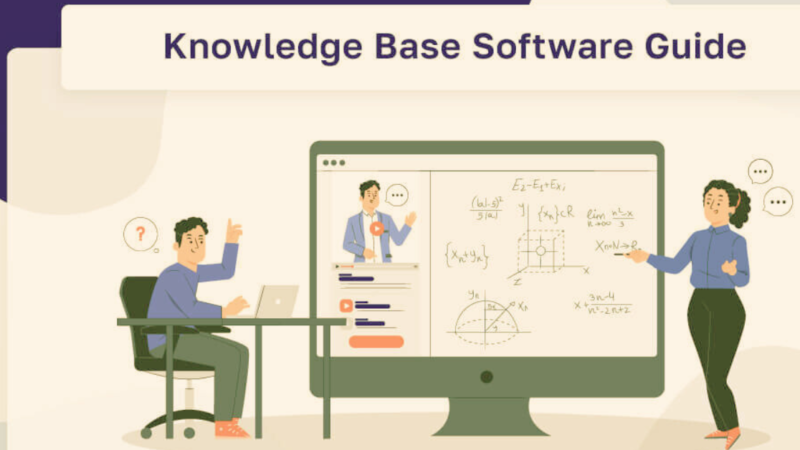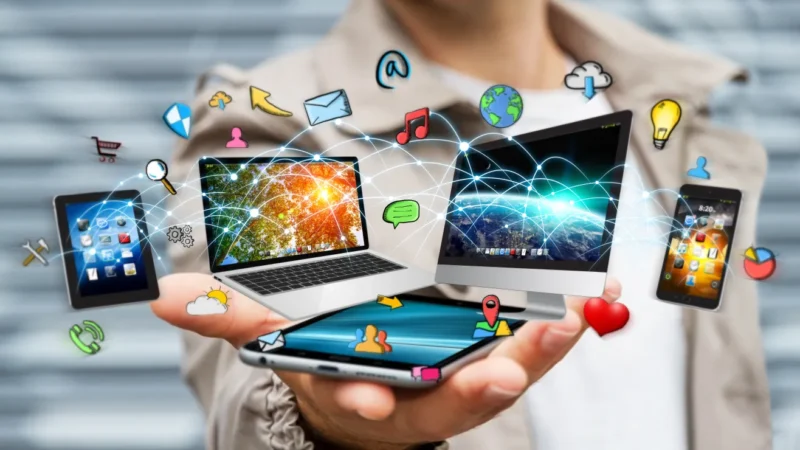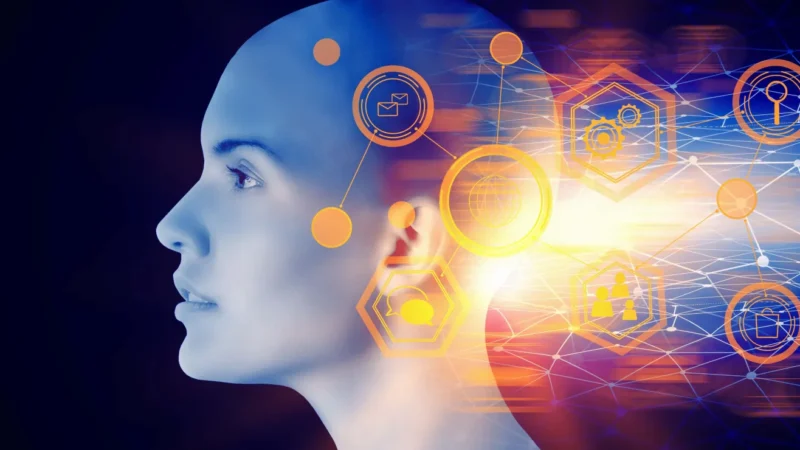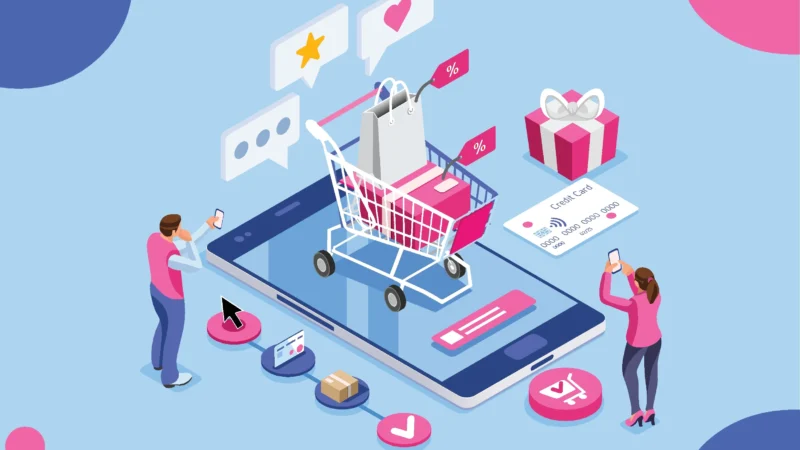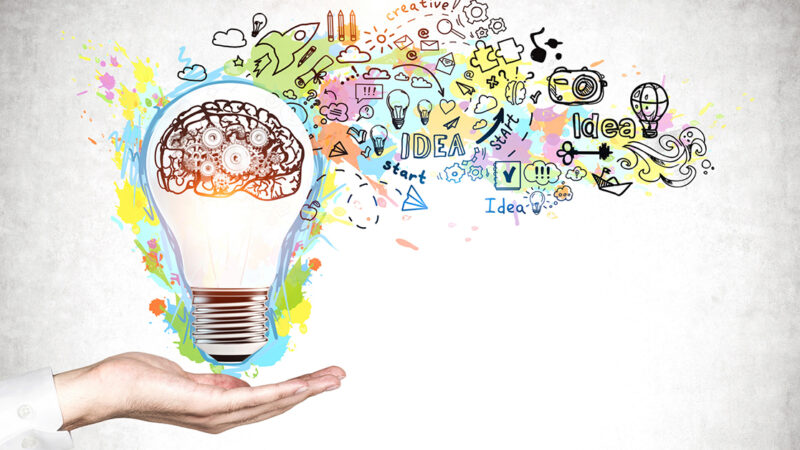What is the IoT (internet of things)? How Does IoT Work?

IoT(internet of Things) is a system of interconnected computing devices; mechanical and digital machinery, items, animals, and people that are supplied with unique identities (UIDs) and the capacity to send data across a network without the need for a human to human or human-to-computer contact.
A thing on the internet of things can be a person with a heart monitor implant; a farm animal with a biochip transponder; a vehicle with built-in sensors to alert the driver of low tire pressure, or any other natural or man-made object that can be assigned an Internet Protocol (IP) address and transfer data over a network.
Diverse sectors are using IoT to run more effectively, better understand consumers to provide superior customer service, boost decision-making, and raise the value of their businesses.
How does IoT work?
The Internet of Things (IoT) ecosystem is comprised of web-enabled smart devices that use embedded systems, such as processors, sensors, and communication gear, to collect, transmit, and act on data they obtain from their surroundings. IoT devices exchange the sensor data they acquire by connecting to an IoT gateway or other edge device, at which point the data is either transferred to the cloud for analysis or examined locally. Occasionally, these devices interact with one another and respond based on the information they receive. People may engage with the devices — for example, to set them up, give them instructions, or retrieve the data — but the gadgets conduct the majority of the job without human participation.
The connection, networking, and communication protocols used by these web-enabled devices rely heavily on the IoT applications installed.
IoT may also use artificial intelligence (AI) and machine learning to facilitate the simplification and dynamism of data collection procedures.
An illustration of the operation of an IoT system from data collection to action
Why is IoT important?
The internet of things enables individuals to live and work more efficiently and acquire total control over their life. In addition to providing smart gadgets for home automation, IoT is vital to business. IoT gives organizations with a real-time view of how their systems operate, providing insights into everything from machine performance to supply chain and logistics operations.
The Internet of Things helps businesses to automate operations and cut personnel expenses. Additionally, it reduces waste and enhances service delivery, hence reducing the cost of manufacturing and delivering items, as well as making consumer interactions transparent.
As such, IoT is one of the most significant technologies in daily life, and it will continue to gain momentum as more organizations grasp the competitive potential of linked devices.
What are the benefits of IoT to organizations?
The internet of things provides several advantages to businesses. Some advantages are industry-specific, while others apply across numerous sectors. Common advantages of IoT include the ability for enterprises to:
- monitor their overall business processes.
- improve the customer experience (CX).
- save time and money.
- enhance employee productivity.
- integrate and adapt business models.
- make better business decisions; and
- generate more revenue.
IoT encourages companies to rethink the ways they approach their businesses and gives them the tools to improve their business strategies.
Utilizing sensors and other IoT devices, IoT is most prevalent in the manufacturing, transportation, and utility industries; but, it has also found use cases in the agricultural, infrastructure, and home automation sectors, propelling certain enterprises toward digital transformation.
IoT may aid farmers in agriculture by facilitating their work. Sensors can gather data on precipitation, humidity, temperature, and soil composition, among other elements, which may be used to automate agricultural practices.
IoT may also facilitate the monitoring of infrastructure-related processes. For instance, sensors might be used to monitor occurrences or alterations inside buildings, bridges, and other infrastructure. This results in cost savings, time savings, improvements to the quality of life, and a paperless workflow.
A home automation firm may use IoT to monitor and control the building’s mechanical and electrical systems. Smart cities may help residents minimize waste and energy usage on a larger scale.
Every sector is impacted by IoT, including healthcare, banking, retail, and manufacturing.
What are the pros and cons of IoT?
Some of the advantages of IoT include the following:
- access to information from anywhere, on any device, at any time.
- access to information from anywhere, on any device, at any time.
- transmitting data packets across a network, so saving time and money
- automating processes, thereby enhancing the quality of a company’s services and decreasing the need for human involvement.
Some disadvantages of IoT include the following:
- As the number of linked devices grows and more data is exchanged between them, the likelihood that a hacker may steal sensitive information also rises.
- Eventually, businesses may have to deal with tens of thousands, if not millions, of IoT devices, making it difficult to gather and manage the data from these devices.
- If there is a problem in the system, every linked device is likely to get corrupted.
- Due to the lack of an international standard for IoT interoperability, it is difficult for devices from various manufacturers to interact.
IoT standards and frameworks
There are several emerging IoT standards, including the following:
- IPv6 over Low-Power Wireless Personal Area Networks (6LoWPAN) is an Internet Engineering Task Force-defined open standard (IETF). The 6LoWPAN standard allows any low-power radio, including 804.15.4, Bluetooth Low Energy (BLE), and Z-Wave, to interact with the internet (for home automation).
- ZigBee is a low-power, low-data-rate wireless network primarily used in industrial environments. IEEE 802.15.4 forms the basis for ZigBee. Dotdot, the global language for IoT developed by the ZigBee Alliance, allows smart products to operate safely on any network and communicate with one another.
- LiteOS is an operating system (OS) for wireless sensor networks that is similar to Unix. Smartphones, wearables, intelligent industrial applications, smart homes, and the internet of cars are all supported by LiteOS (IoV). The operating system is also a development platform for smart devices.
- OneM2M is a layer of machine-to-machine service that may be implemented in software and hardware to link devices. OneM2M, a worldwide standardization group, was established to provide reusable standards that allow IoT applications from many industries to connect.
- The Object Management Group (OMG) established Data Distribution Service (DDS) as an IoT standard for real-time, scalable, and high-performance M2M connectivity.
- The Advanced Message Queuing Protocol (AMQP) is a published open-source standard for asynchronous wire-based communications. AMQP allows organizations and applications to communicate securely and interoperably using encrypted messages. The protocol is used for client-server communications and the administration of IoT devices.
- The Constrained Application Protocol (CoAP) is an IETF-developed protocol that describes how low-power, compute-constrained devices may function in the internet of things.
- Long Range Wide Area Network (LoRaWAN) is a protocol for wide area networks (WANs) intended to enable enormous networks, such as smart cities, with millions of low-power devices.
IoT frameworks include the following:
- Amazon Web Services (AWS) Amazon introduced IoT as a cloud computing platform for IoT. This framework is intended to facilitate the connection and secure interaction of smart devices with the AWS cloud and other connected devices.
- Arm Mbed IoT is a platform for creating IoT applications using Arm microcontrollers. By combining Mbed tools and services, the Arm Mbed IoT platform aims to create a scalable, connected, and secure environment for IoT devices.
- Microsoft’s Azure IoT Suite is a platform consisting of a set of services that enables users to interact with and receive data from their IoT devices, as well as perform various operations over data, such as multidimensional analysis, transformation, and aggregation, and visualize these operations in a business-appropriate manner.
- Google’s Brillo/Weave is a platform for the quick deployment of Internet of Things applications. The platform consists of two key pillars: Brillo, an Android-based operating system enabling the creation of low-power embedded devices, and Weave, an IoT-oriented communication protocol that acts as the device’s language of communication with the cloud.
- Ericsson’s Calvin is an open source IoT platform aimed for creating and managing distributed applications that allow devices to communicate with one another. Calvin consists of a development framework for application developers and a runtime environment for managing an application’s execution.
Consumer and enterprise IoT applications
The internet of things has several real-world applications, spanning from consumer IoT and commercial IoT to manufacturing and industrial IoT. (IIoT). IoT applications cover several industries, such as automotive, telecommunications, and energy.
In the consumer market, smart houses outfitted with smart thermostats, smart appliances, and linked heating, lighting, and electrical gadgets may be remotely controlled through computers and smartphones.
Wearable gadgets equipped with sensors and software may gather and analyze user data, delivering information to other technologies about the users in an effort to make their lives more convenient and pleasant. Wearable devices are also utilized for public safety, for instance, to improve the reaction times of first responders during crises by offering efficient routes to a place or by monitoring construction workers’ or firefighters’ vital signs at life-threatening areas.
IoT provides several advantages in healthcare, including the capacity to monitor patients more closely by analyzing produced data. Hospitals often use IoT technologies for purposes such as inventory management of drugs and medical devices.
Using sensors to measure the number of inhabitants in a space, intelligent buildings may cut energy expenses, for example. The temperature may be adjusted automatically, for instance by putting on the air conditioner when sensors detect a full conference room or turning down the heat after everyone has left for the day.
Using linked sensors, IoT-based smart farming systems may monitor, for example, the light, temperature, humidity, and soil moisture of agricultural fields. IoT also contributes to the automation of irrigation systems.
IoT sensors and installations, such as smart lighting and smart meters, may reduce traffic, preserve energy, monitor, and handle environmental problems, and enhance sanitation in a smart city.
IoT security and privacy issues
The internet of things includes the connection of billions of devices to the internet and the utilization of billions of data points, all of which must be protected. IoT security and privacy are listed as important problems due to the IoT’s enlarged attack surface.
In 2016, one of the most infamous IoT attacks was Mirai, a botnet that hacked domain name server provider Dyn and brought down several websites for a prolonged period of time in one of the largest distributed denial-of-service (DDoS) assaults in history. Attackers obtained access to the network by attacking IoT devices with inadequate security.
Because IoT devices are interconnected, a hacker only has to exploit a single weakness to modify all the data and make it useless. Cybercriminals have access to gadgets that have not been updated often or at all by their manufacturers.
In addition, linked gadgets sometimes require users to enter their personal information, such as their names, ages, residences, phone numbers, and even social network accounts — information that hackers find precious.
Hackers are not the only danger to the internet of things; consumers’ privacy is also a significant worry. For example, corporations that manufacture and distribute consumer IoT devices might utilize them to collect and sell consumers’ personal information.
IoT presents a threat to key infrastructure, including power, transportation, and financial services, in addition to exposing personal data.
What is the history of IoT?
In a 1999 presentation to Procter & Gamble (P&G), Kevin Ashton, co-founder of the Auto-ID Center at the Massachusetts Institute of Technology (MIT), first suggested the internet of things. To attract the attention of P&G’s top management to radio frequency identification (RFID), Ashton titled his presentation “Internet of Things” to embrace the hip new trend of 1999: the internet. Also published in 1999 was Neil Gershenfeld’s book, When Things Start to Think. It did not use the precise phrase, but it presented a clear image of the future of IoT.
The Internet of Things is the result of the confluence of wireless technologies, microelectromechanical systems (MEMS), microservices, and the internet. The confluence of operational technology (OT) and information technology (IT) has enabled the analysis of unstructured machine-generated data for improvement-driving insights.
Although Ashton’s was the first reference to the internet of things, the concept of linked gadgets has existed since the 1970s under the names embedded internet and ubiquitous computing.
In the early 1980s, the first Internet appliance was a Coke machine at Carnegie Mellon University. Using the Internet, programmers could check the condition of the machine and assess if a cool drink will be available should they wish to visit it.
The Internet of Things emerged from machine-to-machine (M2M) communication, which involves devices communicating to each other across a network without human intervention. Connecting a gadget to the cloud, administering it, and collecting data is referred to as M2M.
The Internet of Things emerged from machine-to-machine (M2M) communication, which involves devices communicating to each other across a network without human intervention. Connecting a gadget to the cloud, administering it, and collecting data is referred to as M2M.
The internet of things is also a natural extension of supervisory control and data acquisition (SCADA), a category of software application programs for process control, the collection of real-time data from distant places in order to regulate equipment and conditions. SCADA systems consist of both hardware and software elements. The hardware collects and transmits data to a computer running SCADA software, where it is processed and displayed in a timely way. SCADA has evolved to the point that late-generation SCADA systems have evolved into first-generation IoT systems.
The IoT ecosystem idea, however, did not come into its own until the middle of 2010, when the Chinese government announced that IoT would be a strategic priority in its five-year plan.

